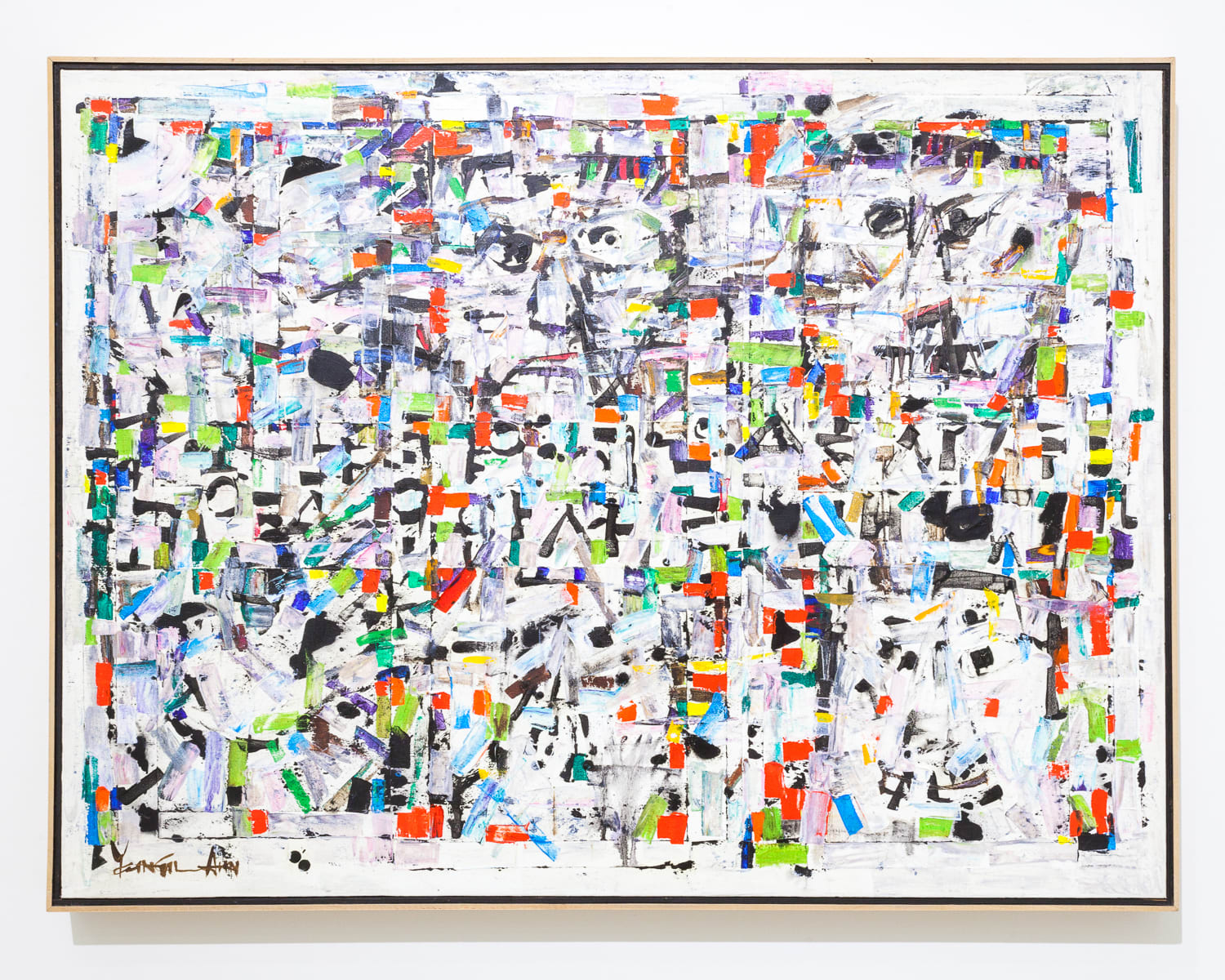Young-Il Ahn Korean-American, 1934-2020
Mask 7-R, 2002
Oil on canvas
30 x 40 x 2 in
76.2 x 101.6 cm
76.2 x 101.6 cm
6738
Further images
This painting is part of a mysterious series by Young-Il Ahn known as the Tal paintings, also called the Mask paintings, his only series in which clear facial features are...
This painting is part of a mysterious series by Young-Il Ahn known as the Tal paintings, also called the Mask paintings, his only series in which clear facial features are depicted. Using the Korean term Tal in the titles separates them from his other series, as it creates a clear through-line back to Korean culture, unlike other works which use English titles.
The Mask paintings are an extension of Young-Il Ahn’s Self-Reflection series. Among Ahn’s most enigmatic series, these works feature abstracted linguistic symbols, most of which reference Hangul text, these works share the idiosyncratic, methodical technique and compositional framework Ahn developed in his Water series. Also in the vein of his Water paintings—which came from a compulsion to convey an ethereal perceptual memory through immutable painted objects—his Self-Reflection paintings seem rooted in the struggle to find an effective visual language to express something that is ultimately perhaps inexpressible.
The text in these paintings is readable at times, in segments, if the reader is willing and able to fill in the gaps and deploy the imagination. But even for those unequipped to deconstruct what may or may not be written on the surface, certain concepts, such as erasure and fragmentation, remain conspicuous in the work. These paintings are reconstructed sanctuaries crafted by the mind and hands of a refugee.
The Mask paintings are an extension of Young-Il Ahn’s Self-Reflection series. Among Ahn’s most enigmatic series, these works feature abstracted linguistic symbols, most of which reference Hangul text, these works share the idiosyncratic, methodical technique and compositional framework Ahn developed in his Water series. Also in the vein of his Water paintings—which came from a compulsion to convey an ethereal perceptual memory through immutable painted objects—his Self-Reflection paintings seem rooted in the struggle to find an effective visual language to express something that is ultimately perhaps inexpressible.
The text in these paintings is readable at times, in segments, if the reader is willing and able to fill in the gaps and deploy the imagination. But even for those unequipped to deconstruct what may or may not be written on the surface, certain concepts, such as erasure and fragmentation, remain conspicuous in the work. These paintings are reconstructed sanctuaries crafted by the mind and hands of a refugee.





